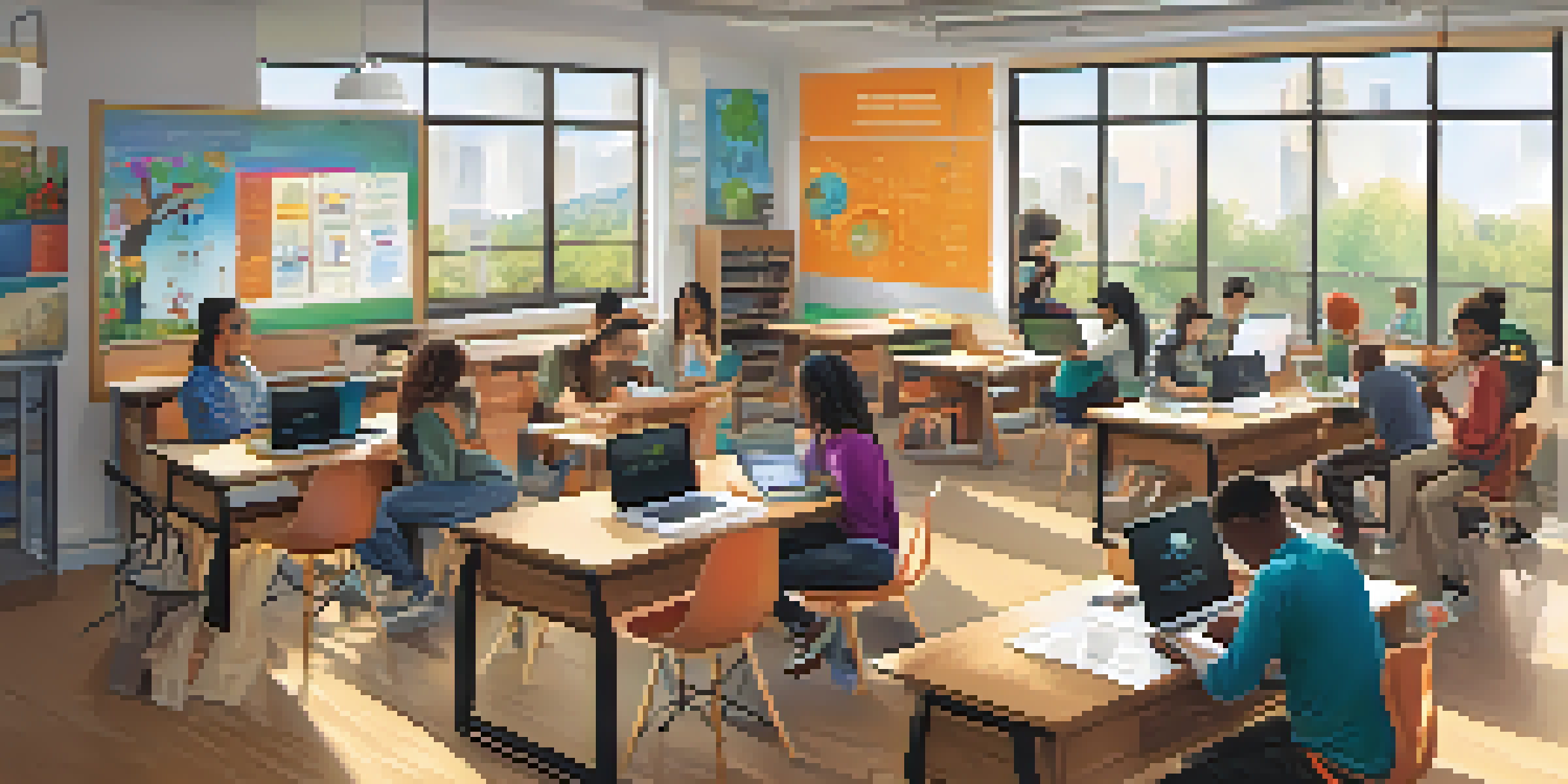Building Community in Blended Learning: Strategies and Tools

Understanding Blended Learning and Community Building
Blended learning combines traditional face-to-face instruction with online experiences, creating a unique educational environment. In this setup, fostering a sense of community is crucial, as it connects learners and enhances collaboration. Without a strong community, students may feel isolated, leading to disengagement and lower learning outcomes.
The Importance of Engagement in Learning Communities
Engagement is the heartbeat of any learning community, especially in blended settings. When students actively participate in discussions and activities, they develop a deeper understanding of the material. This engagement also helps build relationships, making the learning experience more enjoyable and effective.
Blended Learning Needs Community
Fostering a sense of community in blended learning enhances collaboration and prevents student isolation.
Utilizing Technology to Enhance Community Interaction
Technology plays a pivotal role in blended learning by facilitating communication and interaction. Tools like discussion forums, video conferencing, and collaborative platforms can help create an engaging community. By using these tools effectively, educators can bridge the gap between online and in-person interactions.
Creating Inclusive Spaces for All Learners
Inclusivity is key in building a strong learning community. Ensuring that all students feel valued and heard can significantly enhance their learning experience. This can be achieved by encouraging diverse perspectives and providing various platforms for expression, whether through group projects or individual reflections.
Engagement Drives Learning Success
Active participation in discussions and activities deepens understanding and builds relationships among students.
Developing Clear Communication Channels
Clear communication channels are essential for fostering community in blended learning. Educators should establish guidelines for how and when students can interact, whether through emails, discussion boards, or chat groups. This clarity not only helps in maintaining organization but also encourages students to reach out and engage with their peers.
Encouraging Peer Collaboration and Support
Peer collaboration can significantly enrich the learning experience in blended environments. By encouraging students to work together on projects or study groups, they can share knowledge and provide support. This collaborative spirit fosters a sense of belonging and helps students develop essential teamwork skills.
Technology Enhances Interaction
Using tools like discussion forums and video conferencing helps bridge the gap between online and face-to-face learning.
The Role of Feedback in Community Building
Feedback is a powerful tool for strengthening a learning community. Constructive feedback from both peers and instructors can motivate students to improve and engage more deeply. By creating a culture of feedback, educators can help students feel more connected and invested in their learning journey.
Measuring Community Engagement and Success
Finally, it's important to measure the effectiveness of community-building efforts in blended learning. Surveys, participation analytics, and student feedback can provide valuable insights into how well the community is functioning. By regularly assessing these factors, educators can make informed adjustments to enhance the learning experience.